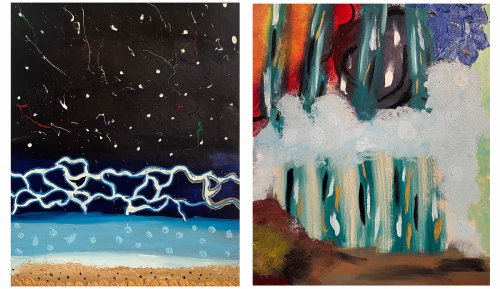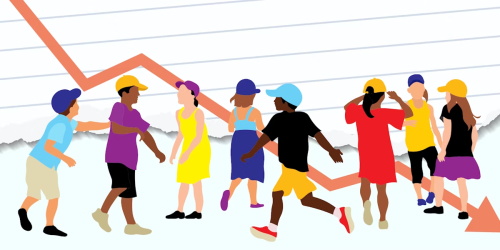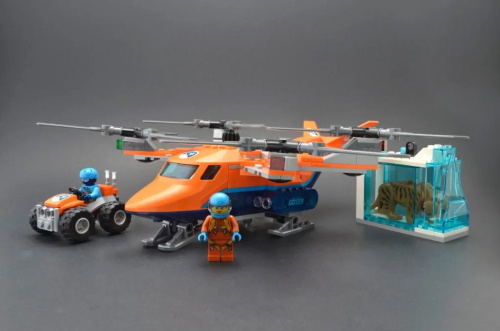How to Nurture Creativity in the Age of Algorithms

Einstein once said, “Imagination is more important than knowledge. For knowledge is limited, whereas imagination embraces the entire world and stimulates progress.” In today’s AI-driven world, this quote holds even more weight. Technology is transforming how we live, work, and learn at unprecedented speed. Artificial intelligence is not only reshaping entire industries—it’s also redefining education, placing greater emphasis on creativity, imagination, and critical thinking as essential skills for the next generation.
But in a world governed by algorithms and automation, are we truly creating an environment that fosters children’s creativity?
Recommendation Systems: Convenient, Yet Confining
We enjoy the convenience that algorithms bring: e-commerce platforms know what we want to buy, video apps predict what we want to watch, and social media curates content tailored just for us. But for children, these “personalized” systems are not always a blessing.
Recommendation algorithms feed children more of what they already like based on their past interactions. While this might seem considerate, it can create an invisible wall—limiting their exposure to new topics, ideas, and experiences. At a stage in life when curiosity is at its peak and the mind craves variety, over-personalization restricts the diversity of information children need to grow.
What’s more, such passive content delivery may lead children to become dependent on being “fed” information, rather than actively seeking it out. This dependence risks weakening their motivation to learn independently and their ability to think critically.
Curiosity Is the Seed of Creativity
Every child is born curious about the world. A parent’s role is to nurture that curiosity, not suppress it. Don’t be afraid of questions like “Why?”—they are signs of an active, growing mind. Instead of rushing to provide answers, guide children in finding their own.
For instance, when a child observes an ant carrying food, ask, “Where do you think it's going? What would you do if you were the ant?” Questions like these spark thought and encourage problem-solving, laying the foundation for creative thinking.
Everyday moments—cooking together, reading a picture book, or walking in the park—can all become opportunities to ignite a child’s imagination. Parents don’t need expert knowledge—just a willingness to be present, listen, and explore alongside their children.
Teach Kids to Question and Think for Themselves
Creativity isn’t just about having imagination—it’s also about having the courage and skill to think critically. Creative individuals often challenge conventional thinking and are confident in forming their own judgments.
In the information-saturated age of AI, the ability to discern truth from misinformation is crucial. Children must learn to question, to look at things from multiple perspectives, and to avoid settling for easy answers.
Reading a story? Ask, “Do you agree with what the character did? What would you have done?” Daily discussions—whether about news, ads, or real-world issues—can help children form independent viewpoints and learn to appreciate differing perspectives.
Expand Horizons: Encourage Interdisciplinary Learning
We can’t expect a child who only learns art to create brilliant animations, or a child who only learns programming to build emotionally resonant games. True creativity often blooms at the intersection of disciplines.
Children should be encouraged to explore a wide range of fields—literature, science, history, the arts. Parents can set up diverse reading plans or enroll their children in varied extracurriculars such as music, coding, painting, or drama. Even a brief exposure can spark unexpected inspiration.
A child who enjoys drawing might, after learning programming, start designing their own video games. A budding scientist who also enjoys writing might create engaging stories with a science twist.
Schools, too, should break down academic silos and adopt interdisciplinary teaching. For example, combining language and history to help students understand a time period through literature, or using math to interpret scientific data. These integrations encourage holistic thinking and give creativity room to thrive.
Let Kids Be Bored—On Purpose
In today’s fragmented digital world, we’re constantly bombarded with information. But for kids, being “bored” isn’t a problem—it’s an opportunity.
When children aren’t overloaded with structured activities or endless autoplay videos, they finally have the mental space to observe, to daydream, to invent. These seemingly “idle” moments are when real, self-driven creativity starts to emerge.
Make AI the Tool, Not the Master
AI is not the enemy of childhood—it can be a powerful tool for creativity, when used wisely. The key is to ensure that children remain in control.
We can use AI to help children find high-quality learning resources, create animations, or design games—but they should be making the choices. For instance, disabling autoplay on YouTube encourages kids to decide what to watch next. When using educational apps, kids can go beyond algorithmic recommendations and try creating their own questions or projects.
It’s also beneficial to introduce children to how AI works. Let them experiment with basic coding, build simple robots, or create smart gadgets. These activities show them that technology is not just something to consume—it’s something they can shape and direct.
Let Technology Be the Wings of Imagination
AI and algorithmic systems are reshaping our world—and the way our children grow up. While access to knowledge has never been easier, imagination, creativity, and independent thinking have never been more precious.
Cultivating creativity in children takes time, patience, and collective effort. Families, schools, and communities must work together to create environments that value diversity, curiosity, and exploration. When children are encouraged to stay curious, to ask questions, to experiment boldly, and to connect ideas across boundaries, they can truly thrive.
In the age of algorithms, let us raise a generation that’s not defined by data—but inspired to redefine the world with imagination.
Recommended for you:







